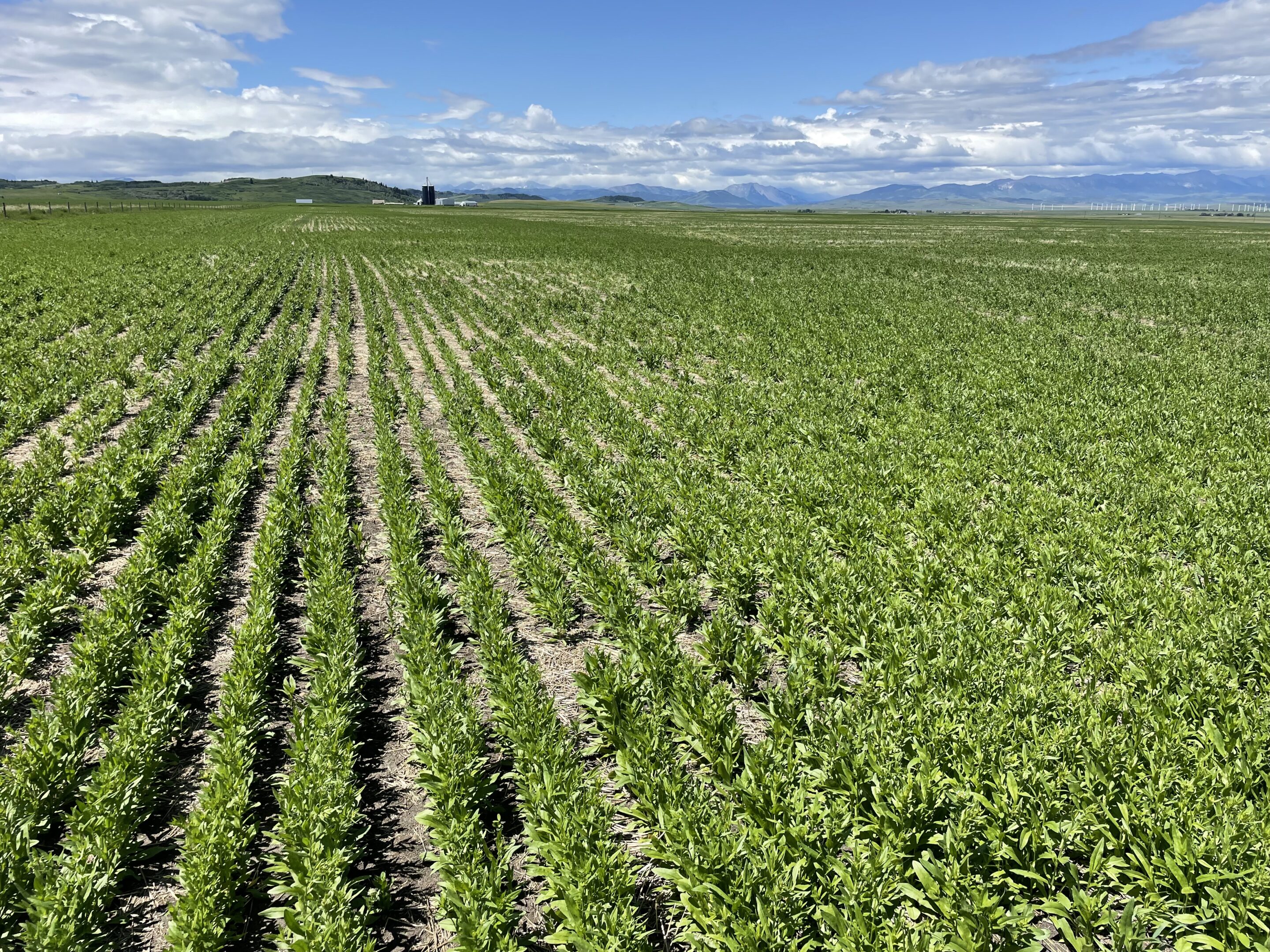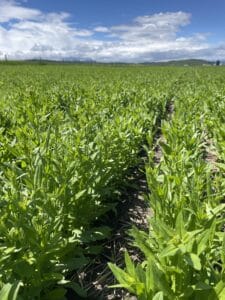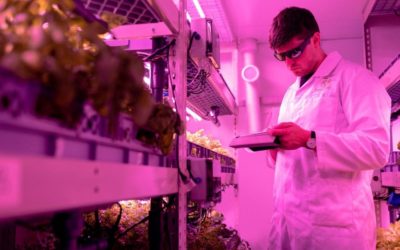Camelina is a versatile crop that’s currently offering producers an impressive list of incentives.
The camelina industry has been expanding in recent years. Whereas it was previously only used for a few things – mostly edible oil and birdseed – it’s now enjoying a resurgence of use and growing market interest in new areas, including biofuel. With more uses, comes more producers and more research into the crop. Camelina has recently sparked interest in being a new specialty product.
“Camelina is an oilseed crop,” says Christina Eynck, an Agriculture and Agri-Food Canada (AAFC) camelina breeder based in Saskatoon, Sask. “It’s a crop that has a long history in Europe, and it originated in the steppe regions of southeastern Europe and southwestern Asia. Then, I want to say (it) almost fell into oblivion after that.”
Camelina has recently seen a revival in popularity. Rapeseed originally gained popularity because of its high yield. With camelina coming back into the spotlight, it offers different advantages, like the ability to grow in less nutrient dense soil.
“Rapeseed was much higher yielding, and the oil was much more amenable to hydrogenation than camelina oil. I would say about maybe 20 years ago, camelina was somewhat rediscovered. It is a relative of canola. Camelina in general is a crop that does surprising well on lower quality land,” continues Eynck.
With the rediscovery of the crop comes research and new potential uses in specialty products.
“Camelina’s uses include human consumption oil as well as industrial uses such as high-end biofuels used in aviation and, more recently, bioplastics and other specialty products,” says Ryan Mercer, seed grower with Mercer Seeds in Lethbridge, Alta, in email correspondence.
As breeders and growers alike look to new camelina uses, research is going into the crop to improve it through plant breeding.
“Current breeding efforts for camelina include higher yield and herbicide tolerance. Additionally, increased seed size is another focus of plant breeding,” says Mercer.
In addition to the current plant breeding efforts, camelina already had some features that made it attractive to producers — in particular, Eynck says there is increased interest in camelina as a climate resilient crop.
“Camelina also has good shatter resistance. So that means that you can straight combine it, which saves you a step and you don’t necessarily need to swath it,” Eynck adds.
Darren Greenfield, the senior director of seed operations at Yield10 Bioscience, shares that camelina can be used as both a cover crop and a profit crop.
“A big interest right now is, of course, biofuel. [Camelina is beneficial] as an alternative oilseed crop outside of the traditional food crops that [can be grown] on acres that may not be as suitable for more traditional canola or soybean production or the other crops that are traditionally used for oil for vegetable.
Producers are finding different values when it comes to camelina in the field due to its resilience and resistance.
“What is quite attractive about camelina too is that it shows resistance to a number of pests and diseases that threaten canola production and also mustard,” he adds.
While there are clearly a lot of features of the crop that appeal to farmers, there are still some challenges that producers face when growing this crop.
“We’re using some of the most modern breeding techniques out there,” says Greenfield. “If you look at camelina as a crop to grow, one of the main challenges right now is that there is no real over the top broadleaf weed control. We’re working on broad spectrum herbicide tolerance in the crop to drive grower adoption and acres planted.”
Aside from the herbicide challenge, camelina can be a profitable crop to produce. Camelina is also versatile because it can be grown in different seasons and in different temperatures.
“Camelina has a very short growing season, only 80 to 90 days to maturity. There are both spring and true winter varieties available. The crop is very cold/frost tolerant,” shares Mercer in his email.
Camelina can be easy to grow, but also to use as a tool to reduce erosion or help with turning over fields.
“I’ve been approached, for example, by potato growers that are interested in putting the winter camelina in after they’ve harvested the potatoes because they are hoping that it may help them reduce their wind erosion problem. Winter camelina is also one of the earliest plants to flower in in the spring. In comparison, when winter camelina flowers, some of my colleagues are just seeding their crops — so that’s pretty neat. Because you can take it off very early, it helps to spread the workload out for the farmer, and it also takes advantage of the earlier moisture in the spring,” shares Eynck.
When asked if camelina has the potential for weed control in fields, Mercer says camelina is another tool in our toolbox in terms of suitable crop rotation options. It offers various benefits for the grower with limited challenges coming into play, making it a lower risk option for producers looking to try something new.
With new marketing opportunities increasingly available, camelina is a potentially beneficial crop for farmers and producers to use in multiple ways.
“Yield10 is offering a contract that takes the marketing risk away from the growers at this early stage of development for the crop,” says Greenfield. “We guarantee to purchase 100 per cent of what they produce when using our contract.”
The Yield10 contract provides a sense of security for producers. The contract removes a lot of the risk when growing a new crop.
“The contract also gives producers a locked in price for a certain amount of their production so that they can make sure that they’re going to cover their input costs, and all those good things as well as have the opportunity to capture upside if there is an upside in the market,” continues Greenfield.
The Yield10 marketing contracts aren’t the only ones available to producers.
“We have letters of intent with companies like Mitsubishi, Marathon, and American Airlines. Yield10 is also working on developing the market and creating that pathway for camelina to go to the biofuel market while making sure that we grow the demand. For camelina, the demand is already there,” adds Greenfield.
Now, as camelina continues to gain popularity, the crop is rising in demand.
“There are several companies contracting camelina including Canary BioFuels Inc. in Lethbridge,” adds Mercer.
There are companies with contracts in various parts of Canada and the United States, with Eynck adding Smart Earth offers contracts in Saskatchewan, amongst other companies.
“Currently, most of the camelina acres are grown under contract with guaranteed offtake,” Eynck continues. “I do think that companies have learned a lesson from when companies overpromised on the crop and then didn’t actually take the grain. Farmers still remember that. It appears that companies are very aware of that and are more cautious.”
Header photo — A field of camelina growing. Photo: Yield10 Bioscience
Related Articles
Yield10 Bioscience Working to Release Herbicide Tolerant Camelina
U.S., Canadian Growers Have Access to New Camelina Contracts
Farmers Offered Winter Camelina Contract Production Opportunity







